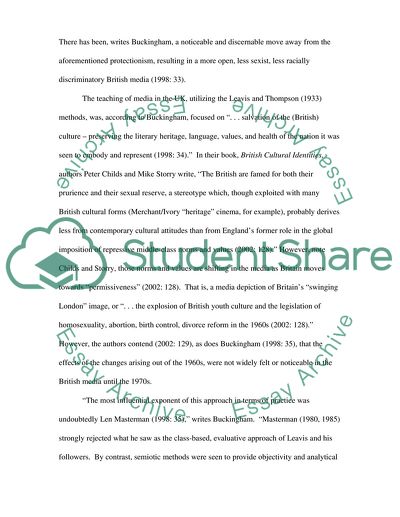Cite this document
(“Is the Media in the UK Sexist and Racist Essay Example | Topics and Well Written Essays - 2000 words”, n.d.)
Is the Media in the UK Sexist and Racist Essay Example | Topics and Well Written Essays - 2000 words. Retrieved from https://studentshare.org/media/1538034-examine-the-ways-in-which-the-mass-media-represents-gender-and-ethnicity
Is the Media in the UK Sexist and Racist Essay Example | Topics and Well Written Essays - 2000 words. Retrieved from https://studentshare.org/media/1538034-examine-the-ways-in-which-the-mass-media-represents-gender-and-ethnicity
(Is the Media in the UK Sexist and Racist Essay Example | Topics and Well Written Essays - 2000 Words)
Is the Media in the UK Sexist and Racist Essay Example | Topics and Well Written Essays - 2000 Words. https://studentshare.org/media/1538034-examine-the-ways-in-which-the-mass-media-represents-gender-and-ethnicity.
Is the Media in the UK Sexist and Racist Essay Example | Topics and Well Written Essays - 2000 Words. https://studentshare.org/media/1538034-examine-the-ways-in-which-the-mass-media-represents-gender-and-ethnicity.
“Is the Media in the UK Sexist and Racist Essay Example | Topics and Well Written Essays - 2000 Words”, n.d. https://studentshare.org/media/1538034-examine-the-ways-in-which-the-mass-media-represents-gender-and-ethnicity.


